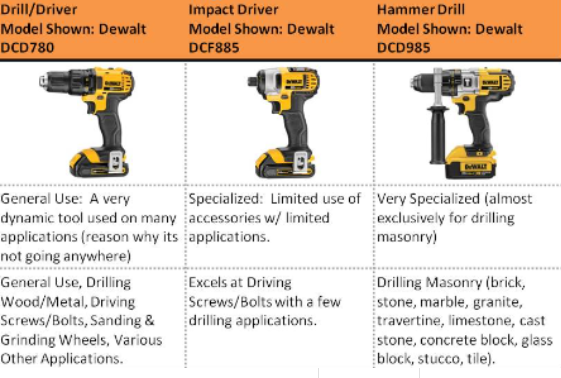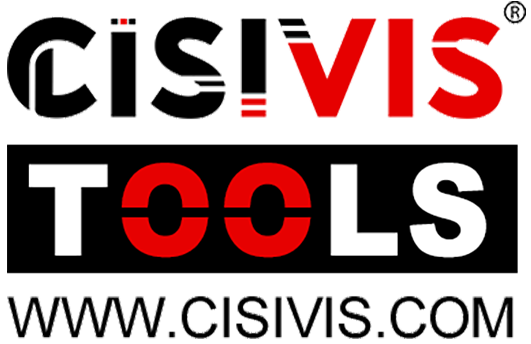
Power Drill vs. Hammer Drill vs. Impact Drill: Which One Do You Need? Leave a comment
When it comes to tackling home improvement projects or professional construction tasks, choosing the right tool is essential. Understanding the differences between a power drill, hammer drill, and impact drill can significantly impact your efficiency and the quality of your work. This article will help you navigate these options, focusing on CISIVIS products to illustrate their capabilities.
Understanding Power Tools
Power tools play a vital role in both construction and DIY projects. They simplify tasks, save time, and enhance precision. But with various types available, how do you know which one suits your needs? Let’s break down the key types: power drills, hammer drills, and impact drills.
Overview of Drill Types
Power Drill
A power drill set is the most common type, designed primarily for drilling holes in various materials, such as wood and plastic. The CISIVIS cordless 2000r/min 10mm Brushed 300w Electric Drill exemplifies this category, providing reliable performance with ease of use. Its 300W motor ensures efficiency, making it perfect for light to moderate tasks.
Hammer Drill
The rotary hammer is a specialized drill used for more challenging materials, like masonry and concrete. Its hammering action allows it to break through tough surfaces while drilling. If you frequently work with heavy materials, a hammer drill is invaluable.
Impact Drill
The Cordless Impact Drill is ideal for driving screws and other fasteners into tough materials. With its unique mechanism, it delivers high torque, making it suitable for heavy-duty tasks. The CISIVIS cordless 2000r/min 10mm 21V Brushless Impact Drill is an excellent choice for professionals seeking power and precision in a compact design.
Key Features Comparison
Torque
Torque is crucial for determining how effectively a drill can handle tough materials. The CISIVIS cordless Brush 21V Drilling 13mm 1580RPM power drill, for example, offers impressive torque for various applications. In contrast, impact drills like the CISIVIS cordless 2000r/min 10mm 21V Brushless Impact Drill excel in high-torque situations, making them ideal for heavy-duty driving tasks.
Speed and RPM
No-load speed is a critical feature to consider. Power drills typically range between 0-2000 RPM, while hammer drills and impact drills may offer higher RPM options. The CISIVIS cordless 2000r/min drill provides a strong speed advantage, making it efficient for drilling tasks.
Weight and Ergonomics
Lightweight tools improve handling and reduce user fatigue. The CISIVIS impact drill is designed with ergonomics in mind, ensuring comfortable operation during prolonged use. A lightweight design allows for better control, especially in overhead or tight spaces.
Performance in Different Materials
Wood
For drilling into wood, a power drill set like the CISIVIS cordless 2000r/min is perfect. It offers the precision and control needed for clean holes without splitting the material.
Metal
When working with metal, the hammer drill shines, providing the necessary power to penetrate tough surfaces. However, for lighter metals, a power drill may suffice.
Concrete/Masonry
For concrete and masonry tasks, a rotary hammer is essential. Its hammering feature allows it to break through tough surfaces, making it the ideal choice for professionals tackling construction jobs.
When to Use Each Type of Drill
Power Drill: Best Use Cases
Power drills are versatile and can handle various materials. They are best for home improvement projects, assembling furniture, and light construction tasks.
Hammer Drill: Best Use Cases
Use a hammer drill when drilling into concrete or masonry. Its specialized design allows it to handle tough jobs effectively.
Impact Drill: Best Use Cases
An impact drill is perfect for driving screws and fastening applications. It’s the go-to tool for construction professionals who require high torque for heavy-duty tasks.
Pros and Cons
Power Drill
- Pros: Versatile, user-friendly, suitable for various materials.
- Cons: Limited power for tough tasks.
Hammer Drill
- Pros: Ideal for masonry and concrete, powerful hammering action.
- Cons: Heavier and may require more skill to operate.
Impact Drill
- Pros: High torque, perfect for driving screws, efficient.
- Cons: Not suitable for drilling; best for fastening.
Cost Considerations
Investing in a quality drill is essential for ensuring long-term performance. Prices vary across drill types, with basic power drills generally being the most affordable. However, investing in high-power tools like the CISIVIS High Power Impact Drill Hammer can pay off with improved efficiency and durability.
Conclusion
Choosing between a power drill, hammer drill, and impact drill depends on your specific needs and the materials you’ll be working with. The CISIVIS cordless 2000r/min 10mm Brushed 300w Electric Drill, CISIVIS cordless Brush 21V Drilling 13mm 1580RPM power drill, and CISIVIS cordless 2000r/min 10mm 21V Brushless Impact Drill offer fantastic options for every type of user.
Assess your requirements, consider the tasks at hand, and select the right tool for your job. Whether you’re a DIY enthusiast or a professional contractor, CISIVIS tools provide the power and reliability you need to get the job done right. Explore our range today to find the perfect drill for your projects!
FAQs
1. What is the main difference between a power drill and a hammer drill?
A power drill is primarily designed for drilling holes in softer materials like wood and plastic, while a hammer drill features a hammering action that allows it to penetrate harder materials such as masonry and concrete.
2. Can I use a hammer drill for regular drilling tasks?
Yes, a hammer drill can be used for regular drilling tasks. However, it may be less efficient and more difficult to control than a standard power drill for softer materials.
3. What types of projects are best suited for an impact drill?
Impact drills are ideal for driving screws and fasteners into tough materials, making them perfect for construction projects, assembling furniture, and tasks that require high torque.
4. How do I choose the right drill for my needs?
Consider the materials you’ll be working with, the types of tasks you plan to undertake, and whether you need versatility (power drill), hammering capability (hammer drill), or high torque for driving (impact drill).
5. What is the importance of torque in drills?
Torque is crucial as it determines how much rotational force a drill can exert. Higher torque ratings allow the drill to handle tougher materials and larger fasteners more effectively.
6. Are cordless drills as powerful as corded ones?
Modern cordless drills can be just as powerful as corded models, especially those with higher voltage and brushless motors, like the CISIVIS cordless models. They offer the advantage of portability without sacrificing performance.
7. How do I maintain my drill for optimal performance?
Regular maintenance includes cleaning the drill after use, checking the battery and charger, ensuring the chuck is free of debris, and replacing worn-out bits promptly to maintain efficiency.
8. What size drill bit should I use for different tasks?
The size of the drill bit depends on the material and the fastener being used. For example, a smaller bit (1/8″ to 1/4″) is suitable for light materials, while larger bits (1/2″ or more) are needed for heavier applications.
9. Can I use my power drill for mixing paint or mortar?
Yes, with the appropriate mixing attachment, power drills can be used to mix paint or mortar. However, ensure that the drill is powerful enough for the task and always follow safety guidelines.
10. What safety precautions should I take when using drills?
Always wear safety goggles, use ear protection if necessary, ensure the work area is clear of obstructions, and follow the manufacturer’s instructions for the specific drill being used.


